Stone Age Peoples - Tools - Palaeolithic - Sold antiquities
Archive of sold antiquities
All artefacts sold in our gallery are fully documented in our online archive and database. Being a specialist ancient art dealer, preserving also the more recent history of each and every piece sold in our shop is at our heart. That is particularly useful for artefacts that changed owners in the meantime. Information that may have been lost in the process can be easily restored from our archives. Please do not hesitate to contact us if you need further information about ancient items that have been sold in our gallery. We can help you with reconstructing the history of ownership for those items. All information about our customers will be kept confidential, of course.-
 Large paleolithic hand axe
Large paleolithic hand axePrehistoric stone tool made of wonderfully banded stone. It was the universal tool of the older Stone age and could be used as a borer or a cutter. From a Swiss museum collection. Found in Morocco, North Africa.
Price: on request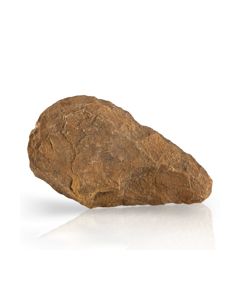 Paleolithic hand axe
Paleolithic hand axePrehistoric stone tool. It was the universal tool of the older Stone age and could be used as a borer or a cutter. From a Swiss museum collection. Found in Algeria, North Africa.
Price: on request Large Paleolithic hand axe
Large Paleolithic hand axePrehistoric stone tool. It was the universal tool of the older Stone age and could be used as a borer or a cutter. From a Swiss museum collection. Found in Foggaret Ezzaouia, Algeria, North Africa.
Price: on request Paleolithic hand axe
Paleolithic hand axePrehistoric stone tool. It was the universal tool of the older Stone age and could be used as a borer or a cutter. From a Swiss museum collection. Found in the Algerian Sahara desert.
Price: on request Paleolithic hand axe
Paleolithic hand axePrehistoric stone tool. It was the universal tool of the older Stone age and could be used as a borer or a cutter. From a Swiss museum collection. Found in the Algerian Sahara desert.
Price: on request Paleolithic hand axe
Paleolithic hand axePrehistoric stone tool. It was the universal tool of the older Stone age and could be used as a borer or a cutter. From a Swiss museum collection. Found in Morocco, North Africa.
Price: on request Paleolithic hand axe
Paleolithic hand axePrehistoric stone tool. It was the universal tool of the older Stone age and could be used as a borer or a cutter. From a Swiss museum collection. Found in Erg Mehedjibat, Algeria, North Africa.
Price: on request Large Paleolithic hand axe
Large Paleolithic hand axePrehistoric stone tool. It was the universal tool of the older Stone age and could be used as a borer or a cutter. From a Swiss museum collection. Found in Erg Mehedjibat, Algeria, North Africa.
Price: on request Huge Paleolithic hand axe
Huge Paleolithic hand axePrehistoric stone tool. It was the universal tool of the older Stone age and could be used as a borer or a cutter. From a Swiss museum collection. Found in Morocco, North Africa.
Price: on request Paleolithic hand axe
Paleolithic hand axePrehistoric stone tool. It was the universal tool of the older Stone age and could be used as a borer or a cutter. From a Swiss museum collection. Found in Morocco, North Africa.
Price: on request Large prehistoric hand axe
Large prehistoric hand axeMassive Paleolithic stone tool. It was the universal tool of the older Stone age and could be used as a borer or a cutter. From a Swiss museum collection. Found in Algeria, North Africa.
Price: on request Paleolithic hand axe or borer
Paleolithic hand axe or borerPrehistoric stone tool. It was the universal tool of the older Stone age and could be used as a borer or chisel. From a Swiss museum collection. Found in the Algerian Sahara desert.
Price: on request Stone Age bow scraper from Egypt
Stone Age bow scraper from EgyptThe Paleolithic tool is of beautiful shape and color. Thebes has been handed down as the place of origin. From an old museum collection.
Price: on request Paleolithic hand axe
Paleolithic hand axePrehistoric stone tool. It was the universal tool of the older Stone age and could be used as a borer or a cutter. From a Swiss museum collection. Found in Erg Mehedjibat, Algeria, North Africa.
Price: on request Large Paleolithic hand axe
Large Paleolithic hand axePrehistoric stone tool. It was the universal tool of the older Stone age and could be used as a borer or a cutter. From a Swiss museum collection. Found in Foggaret Ezzaouia, Algeria, North Africa.
Price: on request Paleolithic hand axe
Paleolithic hand axePrehistoric stone tool. It was the universal tool of the older Stone age and could be used as a borer or a cutter. From a Swiss museum collection. Found in Algeria, North Africa.
Price: on request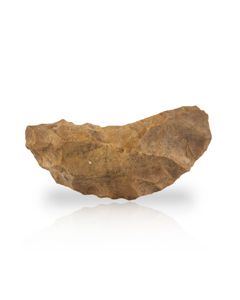 Stone Age bow scraper from Egypt
Stone Age bow scraper from EgyptThe Paleolithic tool is shaped like a sickle. Thebes has been handed down as the place of origin. From a 100 year old museum collection.
Price: on request Paleolithic hand axe
Paleolithic hand axePrehistoric stone tool. It was the universal tool of the older Stone age and could be used as a borer or a cutter. From a Swiss museum collection. Found in Algeria, North Africa.
Price: on request Paleolithic hand axe
Paleolithic hand axeSmall prehistoric stone tool. It was the universal tool of the older Stone age and could be used as a borer or a cutter. From a 100 year old museum collection.
Price: on request Paleolithic hand axe
Paleolithic hand axePrehistoric stone tool. It was the universal tool of the older Stone age and could be used as a borer or a cutter. From a Swiss museum collection. Found in Ouarzazate, Morocco.
Price: on request Paleolithic hand axe
Paleolithic hand axeSmall prehistoric stone tool. It was the universal tool of the older Stone age and could be used as a borer or a cutter. From a 100 year old museum collection.
Price: on request Stone Age bow scraper from Egypt
Stone Age bow scraper from EgyptThe Paleolithic tool is of beautiful shape and color. Thebes has been handed down as the place of origin. Including old museum display.
Price: on request Paleolithic hand axe
Paleolithic hand axeSmall prehistoric stone tool. It was the universal tool of the older Stone age and could be used as a borer or a cutter. From a 100 year old museum collection.
Price: on request Paleolithic hand axe of Homo Erectus
Paleolithic hand axe of Homo ErectusBig hand axe from Niger. Made during the Old Stone Age, around 200,000 years ago. The universal stone age tool could be use as a borer or cutting tool.
Price: on request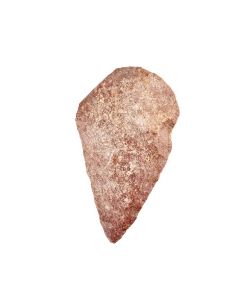 Paleolithic hand axe
Paleolithic hand axeThe universal tool of the older Stone age. It could be used as a borer or a cutter. Approx. 500,000 to 200,000 BC.
Price: on request Hand axe from Galilee
Hand axe from GalileeBig paleolithic hand axe. The universal stone age tool could be use as a borer or cutting tool. Around 500,000 to 200,000 BC.
Price: on request Schaber, Homo Neanderthalensis
Schaber, Homo NeanderthalensisSchaber, mittleres Paläolithikum. Bearbeitung durch Neandertaler, 60000 v. Chr. bis 40000 v. Chr.
Price: on request Messer, Homo Neanderthalensis
Messer, Homo NeanderthalensisMesser, mittleres Paläolithikum. Bearbeitung durch Neandertaler, 60000 v. Chr. bis 40000 v. Chr.
Price: on request Messer, Homo Neanderthalensis
Messer, Homo NeanderthalensisMesser, mittleres Paläolithikum. Bearbeitung durch Neandertaler, 60000 v. Chr. bis 40000 v. Chr.
Price: on request Paläolithische Handaxt des Homo Erectus
Paläolithische Handaxt des Homo ErectusAltsteinzeit, um 200.000 v. Chr. Deutliche Spuren grober Werkzeugbearbeitung durch Homo Erectus. Schweres Objekt mit dunkler Patina.
Price: on request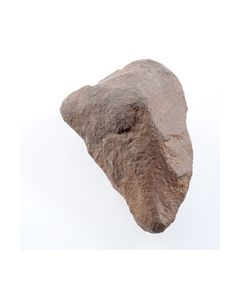 Paläolithische Handaxt des Homo Erectus
Paläolithische Handaxt des Homo ErectusAltsteinzeit, um 200.000 v. Chr. Deutliche Spuren grober Werkzeugbearbeitung durch Homo Erectus. Schweres Objekt mit dunkler Patina.
Price: on request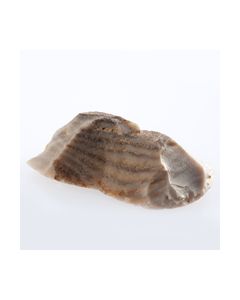 Schaber, Homo Neanderthalensis
Schaber, Homo NeanderthalensisSchaber, mittleres Paläolithikum. Bearbeitung durch Neanderthaler, 60000 v. Chr. bis 40000 v. Chr.
Price: on request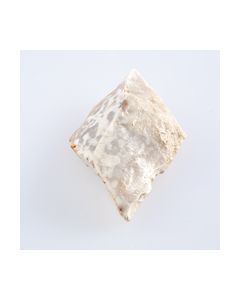 Geometrischer Stichel, Jungpaläolithikum
Geometrischer Stichel, JungpaläolithikumSeltenes Werkzeug aus dem Magdalénien, zum Ende der letzten Eiszeit. 16000 v.Chr. bis 10000 v.Chr., Mitteleuropa.
Price: on request Paläolithische Handaxt des Homo Erectus
Paläolithische Handaxt des Homo ErectusAltsteinzeit, um 200.000 v. Chr. Deutliche Spuren grober Werkzeugbearbeitung durch Homo Erectus. Schweres Objekt mit dunkler Patina.
Price: on request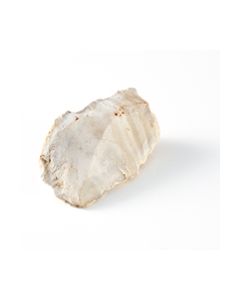 Schaber oder Messer, Homo Neanderthalensis
Schaber oder Messer, Homo NeanderthalensisFlintartefakt, mittleres Paläolithikum. Bearbeitung durch Neanderthaler, 60000 v. Chr. bis 40000 v. Chr.
Price: on request Schaber, Homo Neanderthalensis
Schaber, Homo NeanderthalensisFlintartefakt, mittleres Paläolithikum. Bearbeitung durch Neanderthaler, 60000 v. Chr. bis 40000 v. Chr.
Price: on request

